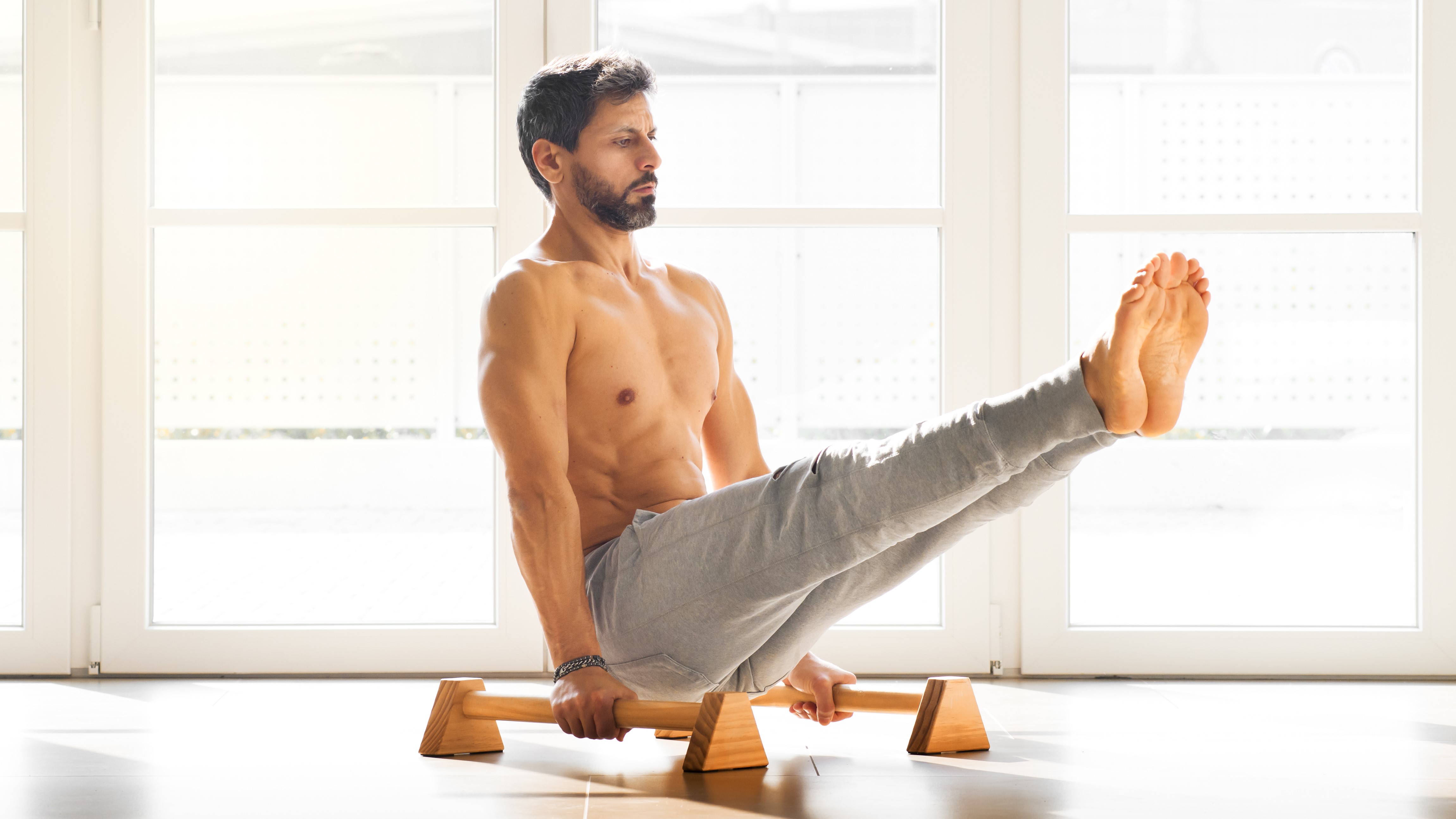
Forget sit-ups and crunches: When it comes to building strong, stable abs, isometric exercises, when added to a strength training routine, have been found to build a powerful body. In fact, isometric exercises can help increase speed and power, as the muscle has to really engage, and stay engaged, in order for you to hold the movement. Think of a plank or a wall sit as an example.
Isometric exercises are also great for those returning from injury and looking to strengthen the body. You could benefit from stronger joints, healthier bones, and better stability, endurance, and balance. Some evidence suggests that isometric exercises could even lower blood pressure when done regularly and with proper breathing. Read more in our Isometric vs isotonic exercise: Which is better for building strength and muscle explainer.
But what isometric ab exercises are best for the core? To find out more, I watched this four-minute video, that shows you how to do 16 different isometric ab holds. I then performed each exercise for one minute, to create a killer 16-minute ab workout.
What are the best isometric ab exercises?
Chair hold: For this exercise, start by lying on your back, with your legs in a tabletop position. Place your hands on your knees, and push into your legs, pushing back with your thighs. Hold here.
Boat hold: For this exercise, get into a V-sit position — to do this, start by sitting on your seat bones, with your knees bent and your feet flat on the floor, and lean your torso back so your abs engage. From here, twist, and touch one elbow to the opposite knee and hold.
Rotational single-leg V-up hold: Start by lying on your back, and raise your legs up to the ceiling. At the same time, lift your head, neck, and shoulders off the floor, with your arms extended alongside your body. Lower one leg to the floor, and lift your arm to touch the opposite leg, which should still be lifted. Hold here.
Sprinter hold: For this exercise, start in a V-sit position and extend one leg out away from your body. Keeping your torso steady, bend your arms and hold them in a running motion, so one elbow is higher than the other.
Crunch hold: Lying on your back, lift your legs up to the ceiling as if you were doing toe touches. Lift your head, neck, and shoulders off the floor, with your arms extended, and reach towards your toes. Hold this position.
Long lever plank: For this exercise, hold a plank position, but step your hands slightly further away from your body. Keep a straight line from your forehead to your heels and keep your core engaged.
Cross knee body plank: For this exercise, start in a plank position on your hands, and cross one knee underneath your body to touch the elbow on the opposite side. Hold this position. If you’re doing this exercise as part of a workout, switch sides halfway through.
V-up hold: For this exercise, get into a V-up position by starting in a seated position, and leaning your torso back, until you feel your abs engage. Keeping a straight back, raise your legs off the ground so that your body makes a V position. Extend your arms towards your legs, and hold.
Wiper hold: A variation of the windshield wiper ab exercise; start by lying on your back, with your legs extended to the ceiling. Keeping your torso still, lower your outstretched legs to the side of your body and hold, keeping your legs a couple of feet off the ground.
Plange plank: To do a plange plank, get into a plank position on your elbows, and engage your abs. Slowly round your upper back and tuck your hips and hold.
Lean back straight leg rise: For this exercise, start by sitting on your mat with your legs extended out away from your body. Lean your torso back, with your arms extended out towards your legs. From here, lift one leg a foot off the floor with your foot extended and hold.
Forearm lower ab plank: Start by lying on your back with your body weight on your elbows. Engage your abs and lift both legs off the floor. Hold here.
Forearm scissors: Starting in the same position as above, engage your core and lift one leg up to the ceiling, leaving the other extended out away from the body, hovering off the floor.
Kick through hold: For this exercise, start on your hands and knees, in a bear plank position. Kick one leg underneath your body, and hold with your leg extended.
High plank bird dog: For this exercise, get into a high plank position, with your abs engaged and a straight back. From here, lift one hand off the floor and extend your arm out in front of you. Hold here.
I tried these 16 isometric ab exercises — here’s what happened to my core
I wasn’t expecting these 16 exercises to torch my core as they did. Compared to workouts that involve burpees and jump lunges, the power here was holding the stillness, and after a couple of minutes, my core really started to shake. I felt my transverse abdominal muscles — the deepest core muscles — really working to hold my body still, and for a couple of the exercises (kick through holds, I’m looking at you), I had to keep stopping and re-setting every few seconds.
If you’re a beginner, I’d recommend holding each exercise for 20-30 seconds, switching sides where appropriate, and build up. If you’re looking for a killer bodyweight ab exercise, give this one a go — you’ll feel it in your core in no time!







